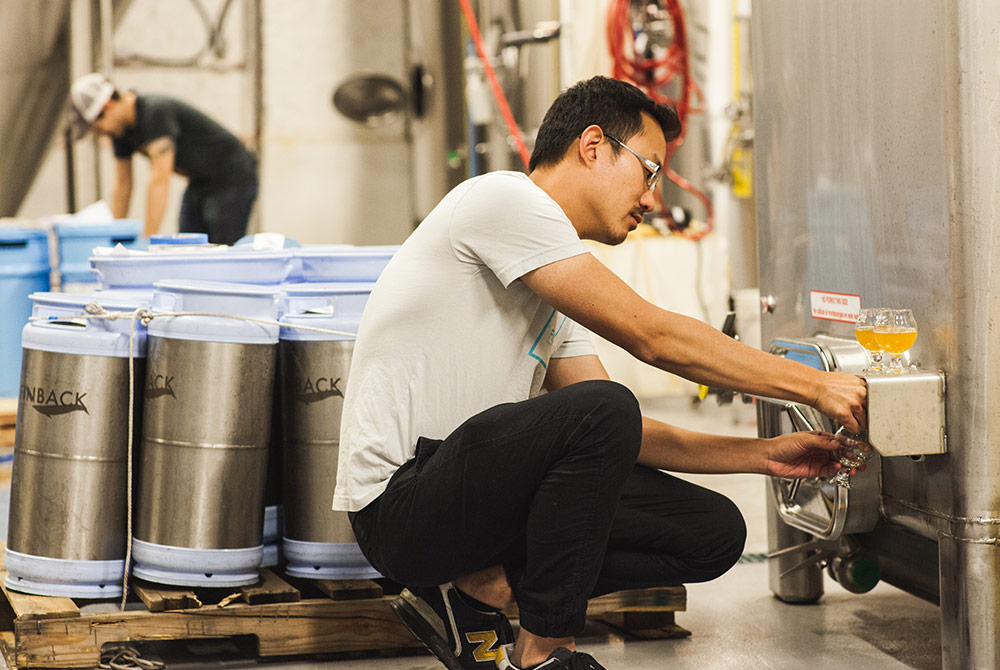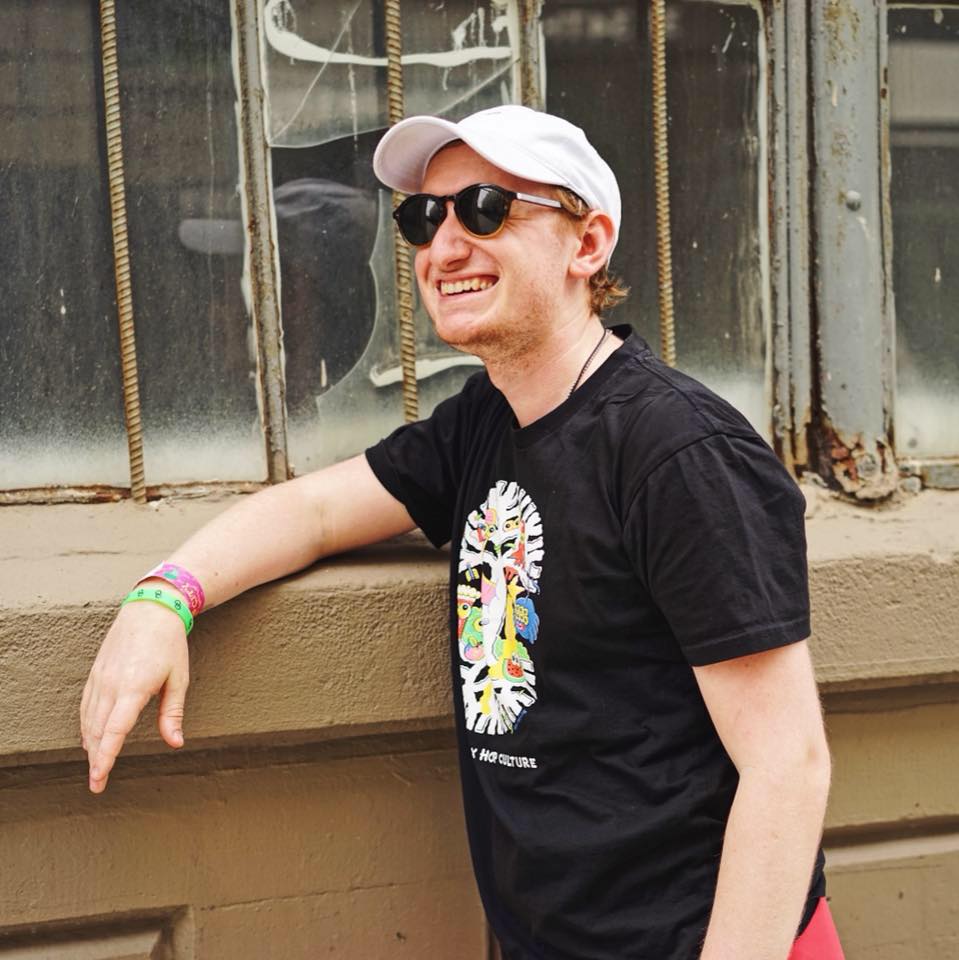Shop
A Pint with the Founders of Finback, Masters of the Quiet Brewery
Deep in Queens, a long walk from the closest subway, sits the quiet confidence of Finback.
I don’t know if there’s a Middle of Nowhere, New York City, but if there is, Finback Brewery is there. In Glendale, where the M and the J subway lines diverge, the brewery sits away from the bustle, a solid 30-minute walk from the closest subway station.
Co-founders Basil Lee and Kevin Stafford don’t mind the quiet, residential neighborhood. After work, couples take a stroll with their kids or folks bike through the narrow streets. Lee and Stafford emulate the neighborhood; as we walked through the brewery, I had to strain to hear Stafford above the ambient noise.
The taproom is similarly quiet. It has white walls, meant to mimic art galleries or urban lofts, and handmade furniture. Lee, a former architect, and Stafford, a former graphic artist, brought their love of economy and minimalism to both the taproom and the beers.
Since opening, though, there hasn’t been a lot of calm for Lee and Stafford. After founding in 2011, they were embroiled in a weird patent issue and struggled to settle on a location for their brewery. They didn’t settle on their current space until 2013, with their first beer coming off the line in 2014. But, like the rest of the class of breweries that opened up three or four years ago, Finback fought through initial challenges, beer lineups changed, and an identity developed. Now, lines form around the block for can releases. And they’re still two tanks away from capacity.
For Lee, it’s not enough for Finback to simply grow; he wants the brewery to grow in a specific way. Ultimately, Lee dreams of buying a farm outside of the city. Serving simple food paired with simple beer — the idyllic retirement dream of any city-brewer.
John Paradiso: How’s the taproom worked out?
Basil Lee: The taproom’s been great. When we were first opening, we definitely planned a taproom but had no idea what a taproom meant. Especially back then. Now, it’s very clear. Taprooms are really the only way for breweries like us to be successful. I mean, it’s interesting because this is a tough neighborhood to get to for sure. Literally, you can see the subways go like this (his arms form two lines stretching out like edges of a pizza slice). Like, we’re smack dab in the middle.
I’m sure we had a hundred names but the Finback whale had beached. It was kind of terrible and tragic but also kind of beautiful. And we felt kind of like a beached whale.
JP: Like the subway is avoiding Finback.
BL: (Laughing) Yes, exactly! So definitely on weekends it’s more of a destination. People can actually get out here and hang out for awhile.
JP: What were you two doing before you started brewing?
Kevin Stafford: Before this, I did graphic design and illustration for about 9 years, just freelancing. I also homebrewed. I was homebrewing for 9 or 10 years and was pretty serious about it — brewing weekly. My apartment was filled with beer. My hallway just had stacks and stacks. I had nightmares of it all falling over. I’d have friends over for parties and we couldn’t even drink it all.
BL: Similar-ish, I was an architect. I was homebrewing too, though not as long, maybe 4 or 5 years before we opened. We started homebrewing together. I feel like in NYC there are a lot of good homebrew communities. But I never worked in a brewery. Kevin worked at a couple breweries on bigger systems. At some point, we were just like, “Let’s open a brewery together.” When we first had the idea in 2011, there were probably 1,300 other breweries in the country; now there’s 6,000. And it was crazy ‘cause even at the time we didn’t know the market. But there weren’t that many breweries in New York City. And I think a lot of our colleagues were probably thinking the same thing. And then we all had the same ideas. And we knew most of the people who were also opening breweries at that time. For instance, Other Half opened like a month before we did and I remember hanging out with Sam and being like, “Oh, you’re trying to open a brewery?”
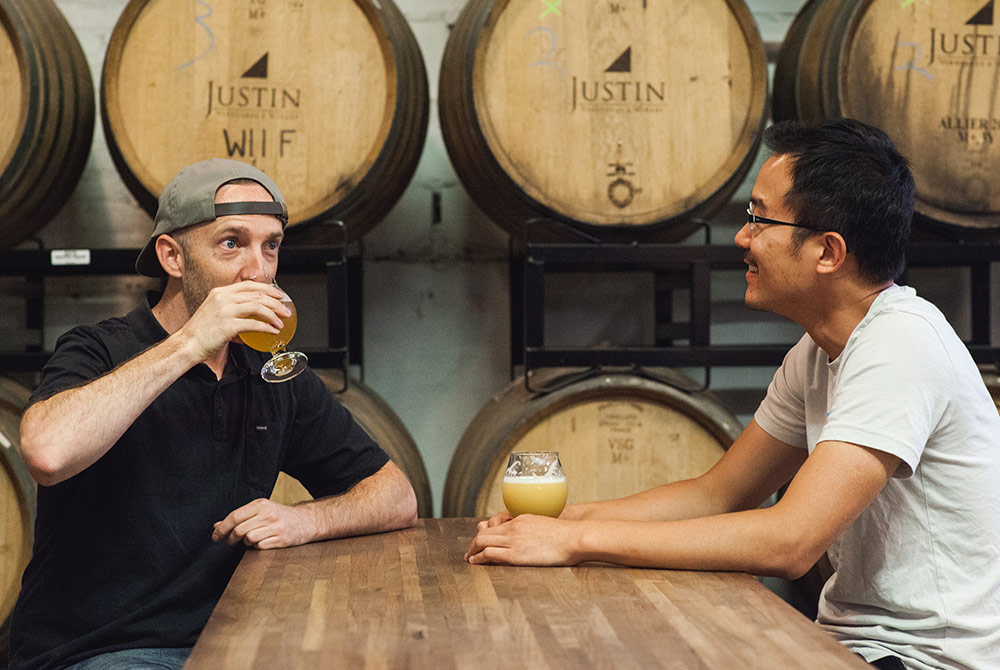
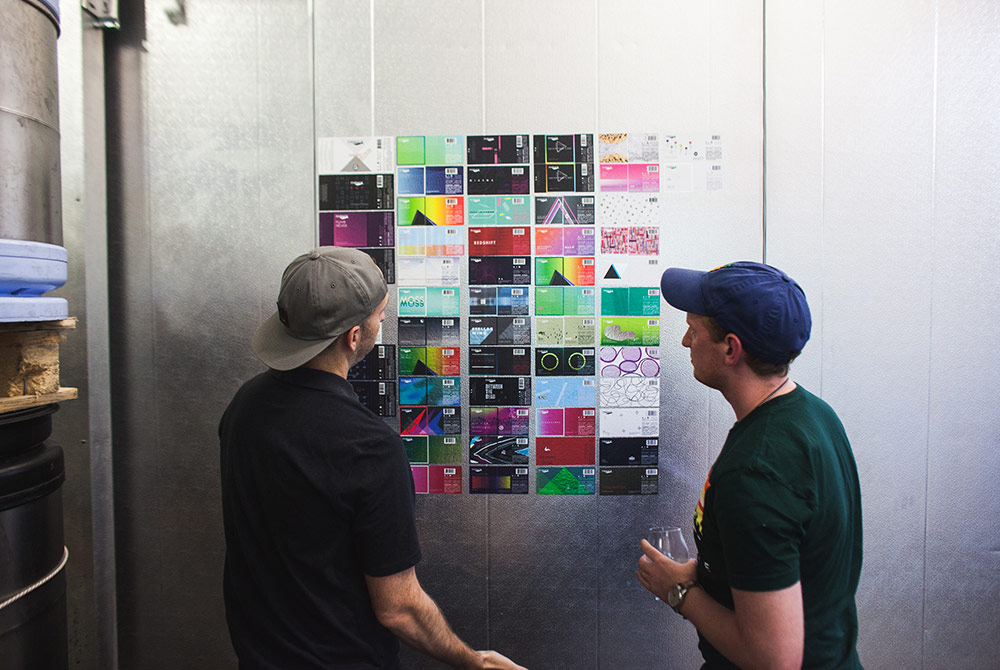
JP: So there was sort of a class or group of you opening at the same time?
BL: Yeah, it seems like it. We all love drinking and making beer. It’s a natural next step. We looked at different scenarios, like contract brewing or opening a brewpub, and we didn’t love those. We wondered if we should even do it outside of the city. It was a somewhat foolish passion thing, but it worked out well. By luck, maybe.
JP: Coming from art backgrounds, why were you drawn to beer in the first place?
BL: It’s fascinating to try new things. I was always interested in Belgians. But just seeking out different stuff. Homebrewing was fun and I grew up in a family that was in the restaurant business. Plus, there’s a creative aspect to beer. And as a visual artist, there’s something… it was interesting because there were top-notch beers but the labels and design were so bad and aimed at a certain crowd. And we wanted to make something aesthetically pleasing as well. Now, it’s crazy to see how artsy things are.
JP: Cans are a new canvas and breweries are bringing on talented artists.
BL: Definitely. And it’s not just a bunch of dudes drinking, playing video games. I mean, it still is. But now the beer’s in a pretty can.
JP: So who designs the cans?
KS: It’s just us two.
There were top-notch beers but the labels and design were so bad and aimed at a certain crowd. Now, it’s crazy to see how artsy things are.
JP: What’s the split? Or do you collaborate on all of them?
KS: We usually split it up so we’re working on our designs. We have similar styles, very minimal but using bright colors and clean lines. We also like geometric patterns. Sometimes we’ll share ideas but we kind of just make our own, test them out on each other, and go with what works.
JP: It’s crazy then that all the can designs end up looking similar.
KS: Visually, I think we both have an idea of what the brand looks like. We know what Finback looks like.
JP: The name Finback comes from a story about a beached whale in Queens. Want to explain that?
KS: Well, initially we were called Narwhal.
BL: As we were planning the business, we started using that name. Officially, all the documents are under Narwhal. But we never trademarked it. And then Sierra Nevada came out with their beer of the same name. And we actually reached out to them before it came out and they were really nice. At first. (Laughing)
KS: They were. They were really nice.
BL: It’s all water under the bridge. They said they just wanted to sell through and then they filed for trademark right then. And they said they would withdraw it once they’d sold it all. And I think they changed their mind after they had won a medal at the Great American Beer Festival. We talked with some people and they said we could try to fight it but we decided that wouldn’t be a good idea. And that all happened before we opened our doors.
JP: What about Finback stuck?
BL: At that point, I’m sure we had a hundred names but the Finback whale had beached. It was kind of terrible and tragic but also kind of beautiful. This thing was huge and it was slick from the water. And we felt kind of like a beached whale. We couldn’t find a space, we didn’t think we could afford anything, we had this trademark thing going on. We thought, let’s just take that name. It was nice because we had wanted to do something nautical.
JP: And now “whale” has a whole different meaning.
BL: (Laughing) We never planned on that.
JP: When you first opened up, you didn’t really focus on one style. Why not? Was there a business reason for the diversity of beers?
BL: From a business standpoint, I think it actually hurt us. It would’ve been easier to say, “We’re about hoppy beers. We’re about yeast-forward beers,” but we didn’t want to do that. Homebrewers generally don’t brew things more than once. You’re not trying to hone in one style, usually. We just wanted to make the best beer possible.
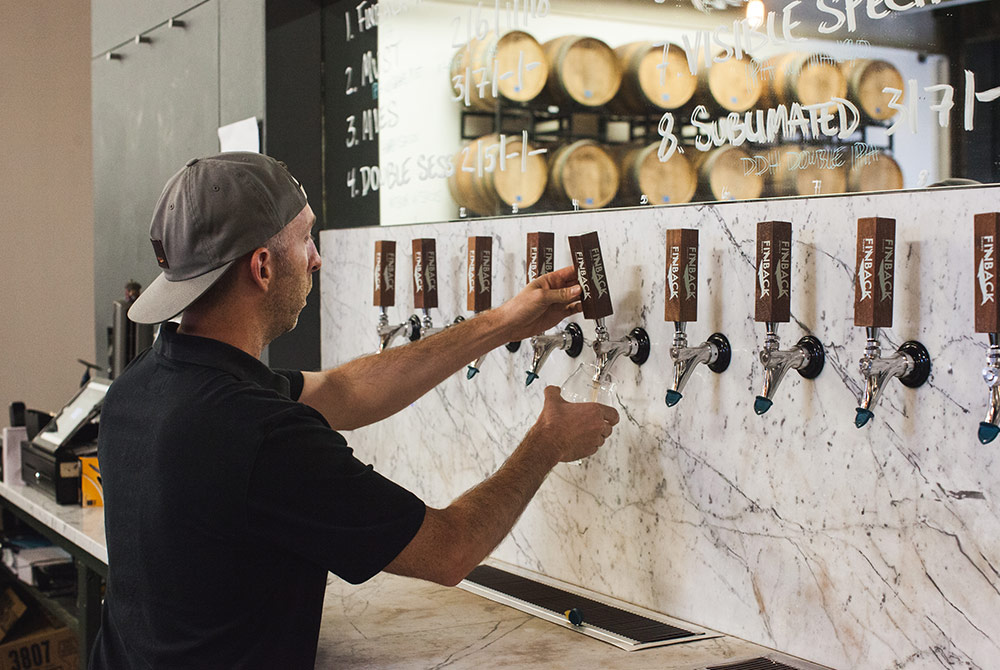
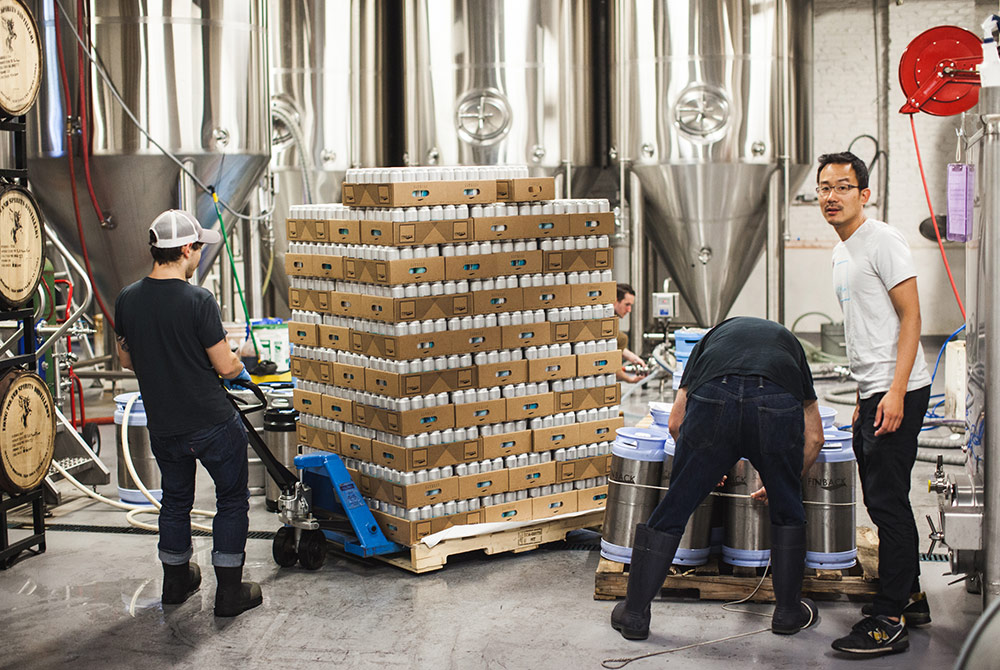
JP: Is there something that sums up the Finback identity?
BL: I think there is something, that you can taste. If you look at Other Half or us or Grimm, we each taste different. I do want to make things that are elegant and definitely drinkable. And I do like trying to play with weird things. We use a lot of fruit.
JP: Is it true that you only launched with three beers?
BL: Finback IPA, witbier, and a smoked porter. Which is a weird one, smoked beers are pretty divisive and slow-sellers.
KS: I would love to make more smoked beers.
BL: If all beers sold equally quick and didn’t slow down our process, we’d probably brew a few more things that we know aren’t just going to move quickly.
JP: Do you think there’s something distinctive about beer in New York City? What has changed since you’ve opened?
KS: I think it’s better and a lot more competitive. It forces people to try harder, make new things, try new techniques.
BL: I think New York City has something special. We’re all very close. Everyone who opened, it’s still very DIY. We all started gnarly little breweries; there’s a cool grittiness. It’s that New York thing where you’re just trying to make it and so you just go for it. And the breweries that opened up at the same time pretty much all know each other. We have the New York City Guild, which has gotten better and tighter. It’s a very friendly competitiveness. New Yorkers are pretty expressive about what’s good and what’s bad and I think that’s made us all better. New York City breweries continue to get better.
JP: And how has the brewery changed since opening?
BL: We’re two tanks away from our original capacity and then we can get a little more space by just being more efficient and moving some stuff around in here.
JP: It doesn’t sound like you feel threatened of hitting a wall.
BL: I think the dream is to open another facility. Like, I have a dream of trying to get a farm. I don’t just want to grow; I want to do something interesting. And if we could do a farm we could grow food and do beer on top of that. Do a place where people could throw events or go camping. I want to keep growing but do different things. I don’t just want to brew Finback IPA.


